Daihouonji Temple, known as Shakado, is a hidden gem in Kyoto, founded in 1221. The awe-inspiring main hall, a national treasure, miraculously withstood historical wars like the Onin War, showcasing scars from that era. The Reihouden Museum within houses ancient artifacts, including the Standing Thousand-Armed Avalokitesvara Bodhisattva, older than the temple itself. Notably, the Roku-kannon Bosatsu by Jokei and statues of the Ten Great Disciples are exquisite works of art. The temple’s history includes a touching tale of tragedy and resilience involving master carpenter Okame. With the nearby Kitano Tenmangu Shrine, Daihouonji invites you to explore Kyoto’s rich cultural tapestry.
Daihouonji Temple is called Shakado, after the statue of Shakyamuni Buddha that is its principal object of worship. It is commonly called Senbon Shakado to distinguish it from Seiryoji Temple, the Shakado of Saga. The main statue of Shakyamuni Nyorai is by Gyokai and is usually closed to the public.

This temple was founded in 1221. The main hall, built in the shinden-zukuri style, is a national treasure that miraculously escaped the ravages of war such as the Onin War. The main hall was built in 1227 and is the oldest wooden structure in old-day Kyoto (the oldest structure in Kyoto City is the five-story pagoda at Daigoji Temple).
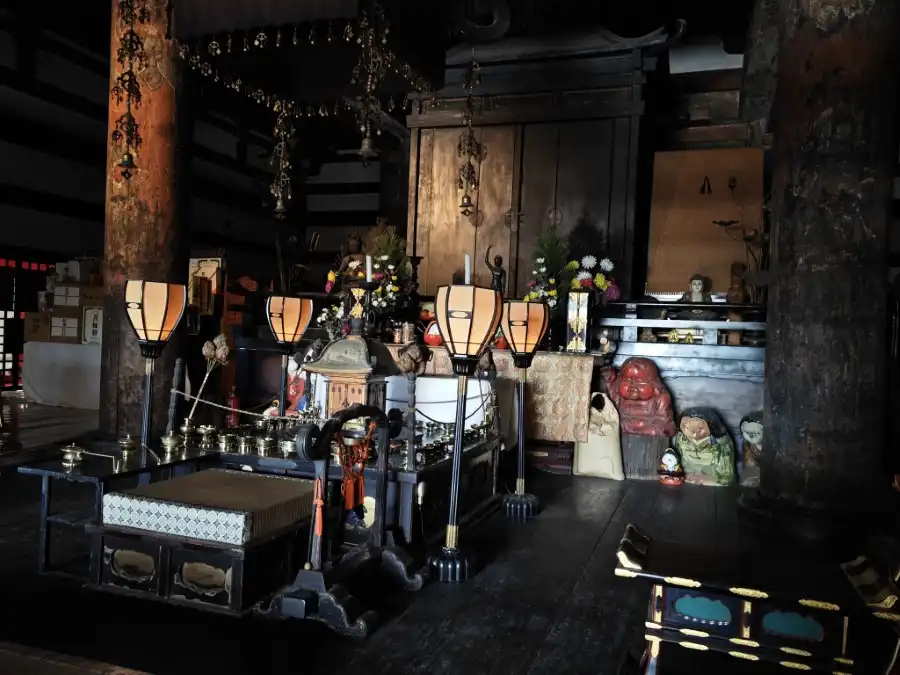
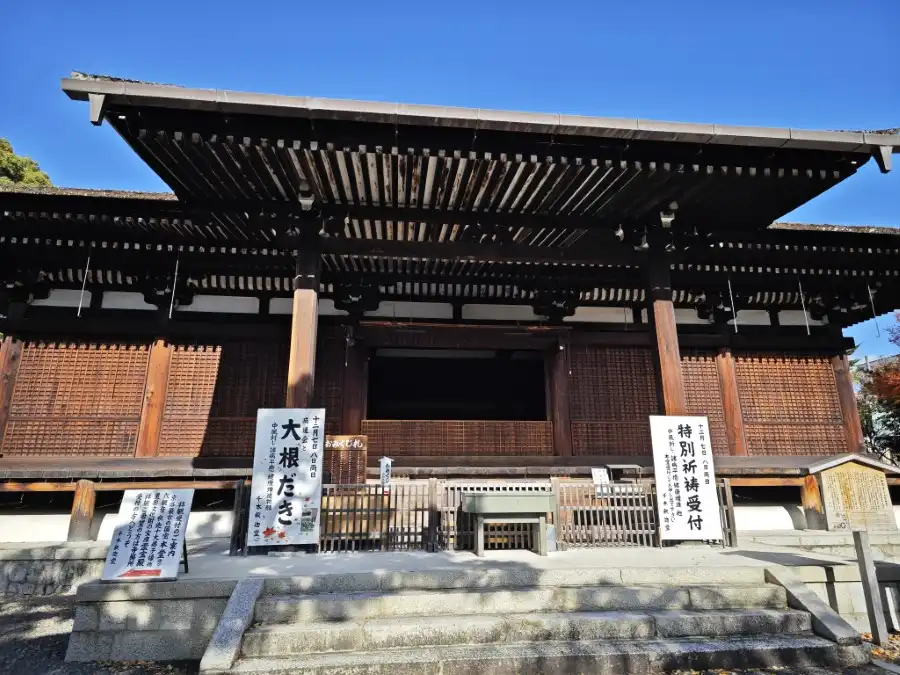

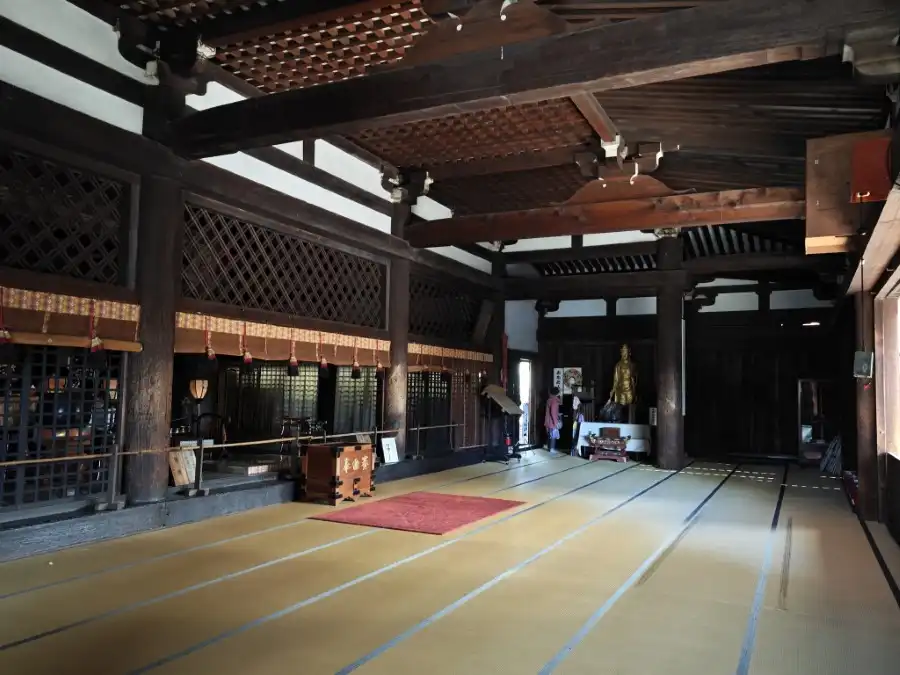
The pillars in the inner sanctum of the main hall still bear fresh scars from the sword and spear wounds of the Onin War.
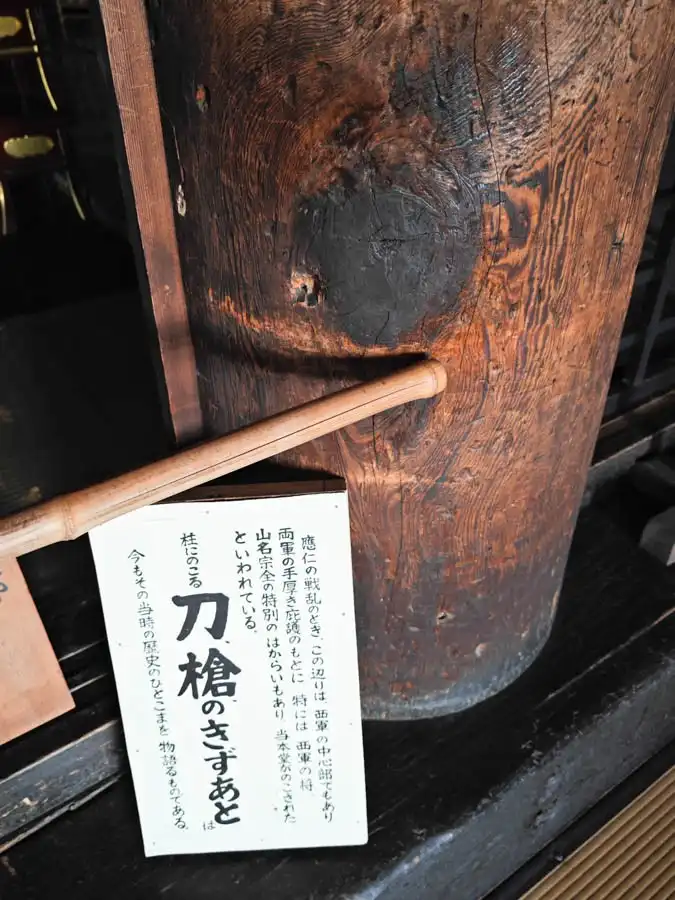
Kyoto City Official Travel Guide
Reihouden Meseum
Except for the main statue of Shakyamuni Buddha, the other important cultural properties are enshrined in the Reihouden Museum. The Standing Thousand-Armed Avalokitesvara Bodhisattva, an important cultural property in the Reihouden Museum, is said to be older than the founding of the temple.
The Roku-kannon Bosatsu (Six Avalokitesvara Bodhisattvas) by Jokei was created in the Kamakura period. The Roku-kannon is a Japanese term that combines the idea of reincarnation of the six ways and the belief in the Avalokitesvara Bodhisattva. These six kinds of Kannon are said to save sentient beings who are lost in the six ways. All six statues remain at Daihouonji Temple, making it a valuable work of art.
The standing statues of the Ten Great Disciples are also Important Cultural Properties. According to the record, the school of Kaikei carved these ten statues of the ten disciples of the Buddha between 1218 and 1220.

Tragedy of Okame
When building the main hall, the master carpenter was in trouble. He had made a mistake in cutting the wrong size for an irreplaceable pillar. Okame, his wife, saw this and advised him to put the pieces of wood together. As a result, the master carpenter was able to finish the construction without any problems. However, Okame committed suicide. Because she felt that her husband would be ashamed if it became known that he had fulfilled his great responsibility based on a woman’s suggestion. The muster carpenter built a Hokyointo (a small pagoda) to pray for the repose of his wife’s soul.
The main hall thus built survived repeated battles. This has led to the belief in Okame, a deity wards off bad luck and brings good fortune. The main hall of the temple also enshrines the image of Okame.
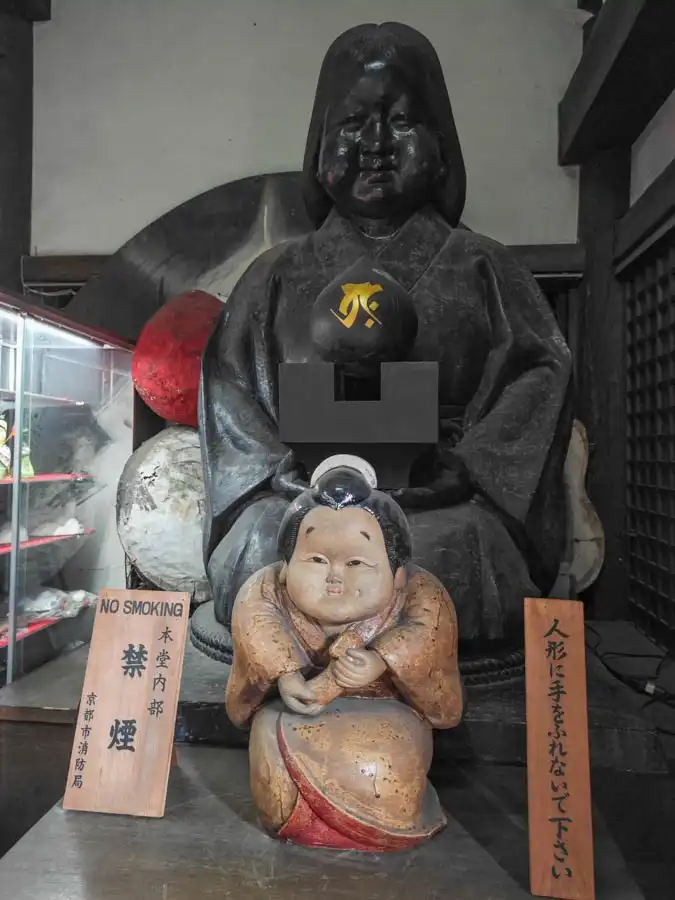
Nearby spots from Daihouonji Temple
Famous Kitano Tenmangu Shrine is less than 10 minutes walk from Daihouonji Temple.
Related articles:
[…] Daihouonji Temple, also known as Senbon Shakado, has a national treasure building and several important cultural […]